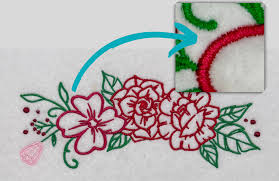.jpg)
Exploring the World of Fabric Textures: Techniques, Tools, and Tips
Exploring the World of Fabric Textures: Techniques, Tools, and Tips
Fabric textures are crucial in making any 3D modeling project come alive, whether you're designing a realistic garment for fashion or crafting a game asset for a video game. The right texture can elevate your model, adding depth and realism. In this blog post, we'll delve into the techniques, tools, and tips you need to create stunning fabric textures for your 3D projects.

-
Techniques for Creating Fabric Textures
-
Procedural Texturing:
- What It Is: Uses mathematical algorithms to generate textures.
- Best For: Repetitive patterns like knits, weaves, and plaids.
- Advantages: Efficient and great for generating consistent patterns.
-
Image-Based Texturing:
- What It Is: Utilizes photos or scans of real fabrics to create textures.
- Best For: Achieving highly realistic textures.
- Advantages: Captures the intricacies of real-world fabric.
-
Painting:
- What It Is: Involves manually painting textures directly onto a 3D model.
- Best For: Creating stylized or hand-painted looks.
- Advantages: Allows for artistic freedom and unique textures.

-
Tools for Creating Fabric Textures
-
3D Modeling Software:
- Examples: Blender, Maya, 3ds Max.
- Purpose: Provides tools for creating and editing textures directly on your models.
-
Texture Creation Software:
- Examples: Substance Painter, Quixel Mixer.
- Purpose: Offers specialized tools for crafting detailed textures, including material presets and advanced brushes.
-
Image Editing Software:
- Examples: Photoshop, GIMP.
- Purpose: Useful for editing texture maps and creating custom designs.
Tips for Creating Fabric Textures
-
Research:
- Tip: Study the fabric you aim to replicate, including its weave, pattern, and texture.
- Why: Accurate replication of real-world fabrics requires a deep understanding of their characteristics.
-
Use High-Quality Images:
- Tip: When using image-based texturing, start with high-resolution images.
- Why: Higher resolution captures more detail, resulting in a more realistic texture.
-
Pay Attention to Scale:
- Tip: Ensure the texture map scale matches the fabric size on your 3D model.
- Why: Proper scale maintains realism, preventing textures from looking out of proportion.
-
Use Layers:
- Tip: Build your texture in layers, adding details like wrinkles and seams gradually.
- Why: Layering adds depth and complexity to the texture, enhancing realism.
-
Test Your Textures:
- Tip: Apply your texture to a 3D model and observe it under various lighting conditions.
- Why: Testing ensures the texture looks good from all angles and under different lighting scenarios.
Conclusion
Creating fabric textures is a blend of art and science, requiring both technical skill and creativity. By mastering the techniques, tools, and tips outlined here, you can produce high-quality fabric textures that add realism and depth to your 3D models, making them stand out in any project.


.jpg)
.jpg)








